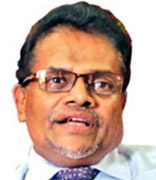The trouble with the arts
New proposals from the Higher Education Ministry
calls for urgent reform in arts and humanities education:
Directors and Vice Chancellors from every university in the country
gathered at Kankasanthurai in the Jaffna Penisula to discuss the reform
and upgrading of Sri Lanka’s higher education sector. This marks the
first time a Committee of Vice Chancellors and Directors (CVCD) meeting
was held in the Northern Province.
Following the meeting, the CVCD and the Ministry of Higher Education
put forward a 10 point reform plan for the sector.
A particular focus will be arts and humanities education, which
currently faces considerable challenges including high unemployment
rates amongst graduates and persistent student –led strikes.
Despite these drawbacks, the arts and humanities stream is the
largest within the university system accounting for 40% of
undergraduates. Many rural students have no option but to enter the
stream as poor science facilities within their schools mean they
struggle to attain the grades they need enter competitive undergraduate
faculties in science subjects. The commissions’ proposal includes the
introduction of a new technical stream to the university system.
This stream is indented to be accessible to rural and urban students.
Around 250 schools are currently offering technical subjects at A-level
and the stream is set to launch within universities in 2016.
The technical stream will change the face of universities providing
an alternative to arts and humanities subjects and greater flexibility
for students.
Vice Chancellor explains...
 |
|
Athula Seneratne |
Speaking on the proposed education reforms, Vice Chancellor of
Peradeniya University, Athula Seneratne said ICTs will become part of
the core education program for arts and humanities students in the
future.
Q: Arts graduates suffer from issues regarding employability,
but is the way forward to decrease enrollment in the arts – or to reform
arts education so graduates emerge with relevant core skills?
A: Reforms in Arts education is underway. New courses are
being introduced. The English medium is encouraged. ICT is a part of the
core program in arts and humanities.
The Technology stream will provide a level ground (to some extent) to
rural children to compete in employment markets until such time the
children of entire country would enjoy comparable facilities.
Q: Today, creativity is at the forefront of the economy-
design, media, communications, research visual communications, these are
valuable skills and it’s the arts faculties that should be providing
graduates with these competencies. Wouldn’t reducing these departments
hamper our ability to compete in these fields?
A: The Arts Faculty was the flagship of Peradeniya University
in the 60’s.
The same subjects are taught today but the caliber isn’t the same. We
need dedicated people to teach and research. New productions are coming
out the Fine Arts Departments. New award winning work published by
members of the academia. We are making progress with the arts -research
engagement is more than before and more funds are being allocated for
research than before.
Q: What exactly do you mean by a technology stream – what
subjects would fall under its scope, what A-levels students would have
to take to be eligible for this stream ?
A: In the newly introduced Technology stream students should
follow three subjects as follows:
Science for Technology
Engineering Technology or Bio-system technology
Select the third subject from 10 subjects including English,
Information Technology, Economics, Geography, Commerce, Accounting, Arts
and so on.
Q: Are rural schools geared to steer graduates in this
direction- what infrastructure would they need? Do they have the
required teachers/facilities?
A: 250 new schools island wide have been equipped with the
facilities and teachers for this program.
Q: When proposing this stream – what models were considered,
has anything similar been done overseas?
A: I think it is the German System.
Q: What is the time line for the introduction of this stream?
A: Now it is taught in schools. The first batch 0f 1600
students will be enrolled in universities in 2016.
Q: Do you predict a decline in the number of students entering
arts faculties once the technical stream is introduced?
A: Yes, but it will happen gradually – the number of students,
particularly those in rural areas, sitting the A/L examination in Arts
will decrease.
Key proposals
The following were the proposals by the Committee of Vice Chancellors
and Directors/Minister of Higher Education:
1. Establish a proper data system for the entire university system.
2. Review what has happened so far and plan what to be achieved with
millennium objectives.
3. Identify and assess the current position of local universities.
4. Move to drafting timely and accurate financial plans for
universities, to prevent ad-hoc requests for funding being made to
universities.
5. The University Grants Commission should be established as the
professional top organization among all universities.
6. Rebalance the enrollment of students for Arts and humanities by
increasing the uptake for Science and Science related subjects.
7. Universities will not be granted full internal autonomy but it is
given that the Minister will not interfere in their day to day
functioning.
8. Staff and personnel vacancies to be filled as soon as possible
9. There will be a new focus on middle level courses.
10. Everyone who receives an admission letter from a university
should be admitted on the same date without any delay.
|

